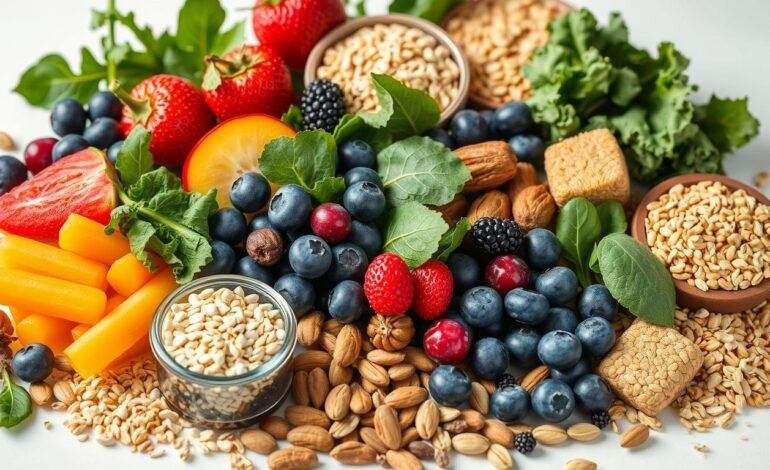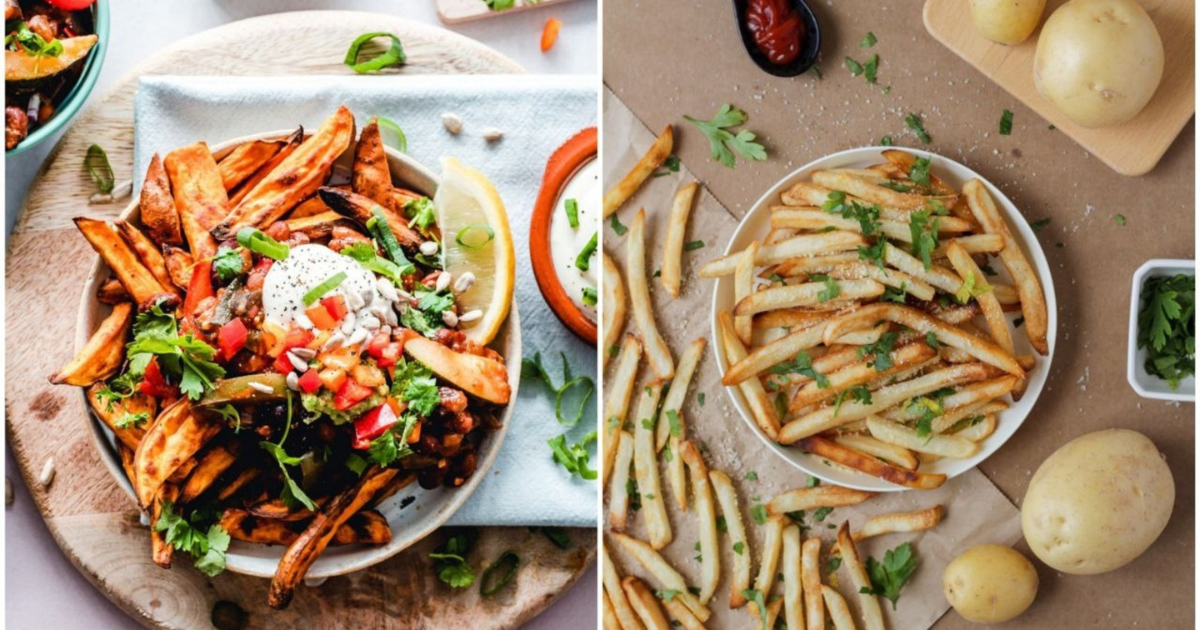Exploring Functional Food Trends For Better Health And Wellness

The world of functional food Trends ok is changing fast. This is thanks to new tech and what people want to eat. These foods do more than just fill your belly; they help your body in special ways. They’re catching the eye of those who care about their health.
The global market for these foods is set to hit $275.77 billion by 2025. It’s growing at a rate of 7.9% each year from 2018 to 2025. This shows a big change in how people see food and nutrition. Now, they see eating as a way to get specific health benefits.
Key Takeaways
- The functional food and beverage market is experiencing rapid growth, driven by consumer demand for products that offer health benefits beyond basic nutrition.
- Consumers are increasingly viewing their dietary choices as a way to achieve specific health goals, such as improved skin health, hormone balance, and better sleep.
- Emerging trends in functional eating include the incorporation of ingredients like collagen, adaptogens, probiotics, and hormone-balancing foods.
- The growing emphasis on functional health underscores a shift towards purposeful nutrition for overall well-being.
- Personalized nutrition, plant-based diets, and nutrigenomics are reshaping how healthy eating and dietary choices are understood and approached.
Understanding the Evolution of Functional Nutrition
How we view nutrition has changed a lot. Now, people want more than just to eat. They aim for wellness. Gen Z and Millennials are leading this change, choosing foods and drinks that help them live healthier.
Shifting Consumer Perspectives on Health-Conscious Eating
A survey found that 51% of people are trying to stay healthy as they age. They’re picking foods that help their skin and support hormones. They also want better sleep. This shows how food is seen as a way to improve overall health.
The Impact of Gen Z and Millennial Preferences
Gen Z and Millennials are driving the trend towards wellness. They prefer foods and drinks that boost health, like probiotics and brain-boosters. Their choices are changing the market, pushing brands to make products that are both nutritious and healthy.
The Rise of Wellness-Focused Consumption
Wellness is now a big part of what we buy, from energy drinks to seltzers. People want products that taste good and help their health. This change is leading to new products that support immune health and reduce stress.
As nutrition evolves, brands must listen to what consumers want. They need to make products that are not just healthy but also appealing. This will help meet the growing need for wellness-focused foods and drinks.
Current Food Trends Shaping the Industry

The food and beverage world is always changing. New trends are making a big impact. People want snacks and meals that are good for them and make them feel good.
Functional snacking is becoming very popular. People are looking for snacks with cognitive-enhancing ingredients like omega-3s. They also want snacks that are probiotic-rich for their gut health. Plus, collagen-infused delicacies are in demand for their benefits to joints and skin.
Restaurants are now offering anti-inflammatory ingredients and superfoods on their menus. This is because younger people, like Gen Z and Millennials, want to live longer and healthier. They are leading the longevity movement.
| Trend | Growth Rate |
|---|---|
| Forest protection-related food and beverage claims | 37% increase (2020-2023) |
| Microalgae-containing product launches | 42% increase (2020-2023) |
| Hydration-related claims in soft drinks and sports nutrition | 10% increase (last 3 years) |
We can look forward to even more culinary experiences that focus on health. These will meet the varied needs and tastes of today’s consumers.
The Booming Functional Beverage Market

The global functional beverages market has grown a lot, reaching $175.5 billion in 2022. It’s expected to grow even more, hitting $339.6 billion by 2030. This growth is at a rate of about 8.6% each year.
Market Leaders and Their Innovations
Prominent players like PepsiCo Inc., The Coca-Cola Company, and Red Bull GmbH lead the market. They are always introducing new products. These products meet the changing tastes of consumers.
Emerging Beverage Categories
- Ketone-based drinks: These drinks offer health benefits and are attracting a lot of attention.
- Prebiotic tonics: They support gut health and are popular among those focused on wellness.
- Plant-based keto shakes: These drinks combine plant-based nutrition with ketogenic principles, changing the market.
Investment Opportunities in Functional Drinks
Investors are taking notice of the market’s growth. Companies like Ketone-IQ and Olipop have received significant funding. Ketone-IQ got $8.2 million, and Olipop got $43.5 million. This shows the big investment potential in this industry.
| Company | Market Share | Recent Funding Raised |
|---|---|---|
| PepsiCo Inc. | 7.35% | – |
| The Coca-Cola Company | 7.10% | – |
| Red Bull GmbH | 5.77% | – |
| Ketone-IQ | – | $8.2 million |
| Olipop | – | $43.5 million |
The booming functional beverages market offers many chances for growth. Both big companies and new startups can find opportunities in this fast-growing field.
Technology and Innovation in Functional Foods

Technological advancements are changing the functional food and beverage industry. Companies are using new technologies to make food deliver health benefits, not just drugs. This change is because more people want healthy products that fit into their daily lives.
NewTree Fruit Company is leading with their de-sugaring process. They use advanced food tech to keep fruit juices tasty but lower in calories and sugar. This meets the growing need for healthier treats that still satisfy our sweet tooth.
It’s also important for brands to have scientific proof for their health claims. They need to show that their products really do help with health. This is because people are looking for foods that help prevent diseases and improve overall health.
New technologies are making functional foods better and more effective. Brands are now able to create products that improve health and wellness. As people become more health-conscious, the industry will keep finding ways to make healthy eating easy and enjoyable.
As we head into 2025, food trends are evolving to meet changing consumer demands and dietary preferences. Plant-based diets continue to be at the forefront, with vegan and plant-based options expanding beyond traditional items. Products like plant-based milk, lentils, and creative protein alternatives are predicted to remain popular. In the realm of culinary creativity, chefs are exploring flavors like hot peppers, kimchi, and leafy greens that are in high demand among Gen Z and health-conscious shoppers. Additionally, cottage cheese is making a surprising comeback, showing up in unique desserts and savory dishes.
The menu offerings in restaurants and retailers alike are expected to highlight food and beverage items that fuse diverse influences and current food trends. On TikTok, for example, creative salads and new pizza crusts—including gluten-free and veggie-based options—are garnering attention. Classic comfort foods like pepperoni pizza are being reinvented with fresher ingredients, catering to customers looking for familiar yet healthier staples.
In 2024, we saw a rise in strawberry-flavored items and innovative dessert concepts. Moving into 2025, food trend predictions suggest flavors like exotic fruits, unique spices, and nutritious food sources will hit an all-time high. For retailers and shoppers alike, the year ahead promises exciting options that blend sustainability, flavor, and health-conscious choices, as products like sustainably sourced salmon and creative plant-based foods gain momentum in the coming year.
“The rise of functional foods is not just a trend, but a reflection of our growing understanding of the profound impact that diet has on health and wellness. By harnessing the power of technology, the industry is poised to revolutionize the way we approach preventive care and disease management through the foods we consume.”
– Dr. Samantha Nguyen, Functional Food Scientist
Also Read : Frozen Food Dishes That Are Surprisingly Delicious
Conclusion
The functional food and beverage industry is growing fast. This growth comes from people wanting healthier choices and new technologies. But, there are big challenges like rules, cost, and teaching people about these foods.
Companies face tough rules, especially for new products like those with cannabis or hemp. They need to make these foods easy for everyone to get. This will help more people enjoy the benefits of functional foods.
Even with these hurdles, the rise of functional foods is a big change. It’s making our food system healthier and more sustainable. Trends like plant-based foods and local ingredients show the industry is changing for the better.
As the demand for functional foods grows, businesses must be quick to adapt. They need to tackle rules, teach people about these foods, and offer top-quality products. This way, the industry can reach its full potential and lead the way in wellness.
FAQs
Q: What are the major trends in 2025 that we can expect in the culinary world?
A: The major trends in 2025 will likely include a rise in plant-based options, innovative menu items featuring global flavors, and an increased focus on sustainable food production. Chefs and retailers are expected to adapt to these new food trends to meet customer demands.
Q: How will food waste be addressed in the food trends for 2025?
A: Food waste will be a significant concern in 2025, prompting chefs and food brands to create more efficient food production methods. Expect to see initiatives aimed at minimizing waste through creative use of ingredients and new menu designs that incorporate leftover items.
Q: What role will plant-based foods play in the food trends of 2025?
A: Plant-based foods are anticipated to be at the forefront of food trends in 2025, with a variety of innovative options such as lentil salads, plant-based milk, and vegan desserts gaining popularity. As consumers become more health-conscious, these options will cater to their needs.
Q: What flavors can shoppers expect to see in the year ahead?
A: Shoppers can expect to see exciting flavors like kimchi, hot peppers, and tahini emerging in 2025. These flavors will be incorporated into various dishes, from appetizers to main courses and desserts, reflecting the evolving tastes of customers looking for unique culinary experiences.
Q: How will the food industry adapt to anticipate food trends in 2025?
A: The food industry will adapt by closely monitoring consumer preferences and leveraging data to predict emerging trends. Brands and retailers will likely develop new products, invest in sustainable practices, and enhance their menus to align with the latest food trends for 2025.
Q: What new food trends are likely to emerge in 2025?
A: New food trends in 2025 may include gluten-free alternatives, innovative pizza crusts, and creative uses of staple ingredients like cottage cheese. The culinary landscape will continue to evolve as chefs experiment with these trends to attract a diverse customer base.
Q: How does social media influence food and drink trends in 2025?
A: Social media platforms like TikTok will play a crucial role in shaping food and drink trends in 2025. Viral recipes and food challenges can quickly popularize new dishes and ingredients, prompting chefs and retailers to adapt their menus to cater to these trends.
Q: What can consumers do to stay informed about the top five food trends of 2025?
A: Consumers can stay informed by following food blogs, social media influencers, and industry reports that highlight the latest food trends. Engaging with local food communities and trying new restaurants can also provide insight into emerging culinary trends.
Q: How will food production practices change in response to the trends in food for 2025?
A: Food production practices are expected to become more sustainable, focusing on reducing carbon footprints and utilizing local food sources. This shift will align with consumer preferences for fresh, ethically produced ingredients in the coming year.





